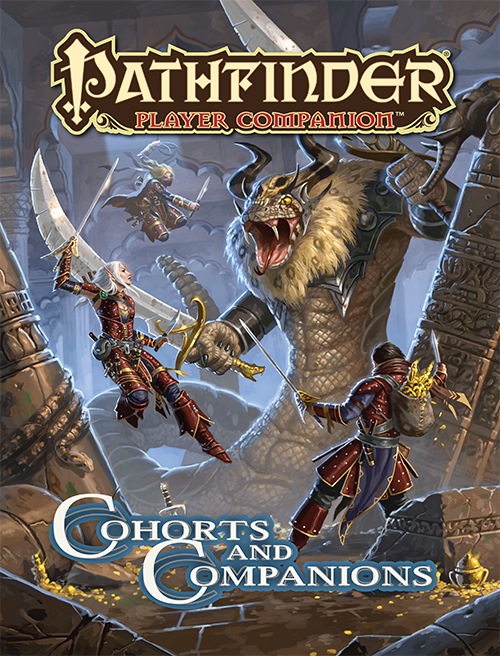While
conflict with villains and monsters is a significant part of any
roleplaying game, the game would be considerably less interesting if
the PCs didn’t have friends and allies as well. Whether they’re a
local inn-keeper providing the PCs a room to sleep in or a loyal
cohort who accompanies the PCs on their adventures, these friendly
characters help fill out the rest of the world and provide variety
beyond evil and/or monstrous opponents. Pathfinder Player Companion: Cohorts and Companions
focuses on the followers and allies
who aid the PCs in various ways throughout their adventuring careers.
As
the book’s name implies, cohorts (gained from the Leadership feat)
are a significant focus, but the book also goes considerably beyond
these. The “Companions” part of the title can refer to animal
companions, but also to pretty much any other person, animal,
monster, or even object that in some way accompanies or aids the
PCs—and
there is quite an impressive breadth of options covered.
The
book opens with a two-page
discussion about why NPCs
might follow PCs, and how PCs
might go about gaining followers. This
includes things like hiring
NPCs as well as NPCs just following along for their own reasons.
Naturally, there’s a fair amount of discussion about the Leadership
feat, as well as mention of the variant Leadership
feats that can be found in
other products: Squire from Knights of the Inner Sea,
Torchbearer from Dungeoneer’s Handbook, and Vile
Leadership from Champions of Corruption. There is also
a very good sidebar on “Who Controls Cohorts?” which discusses
how to decide whether the GM or player (or a combination of both)
gets to control cohorts’ actions.
